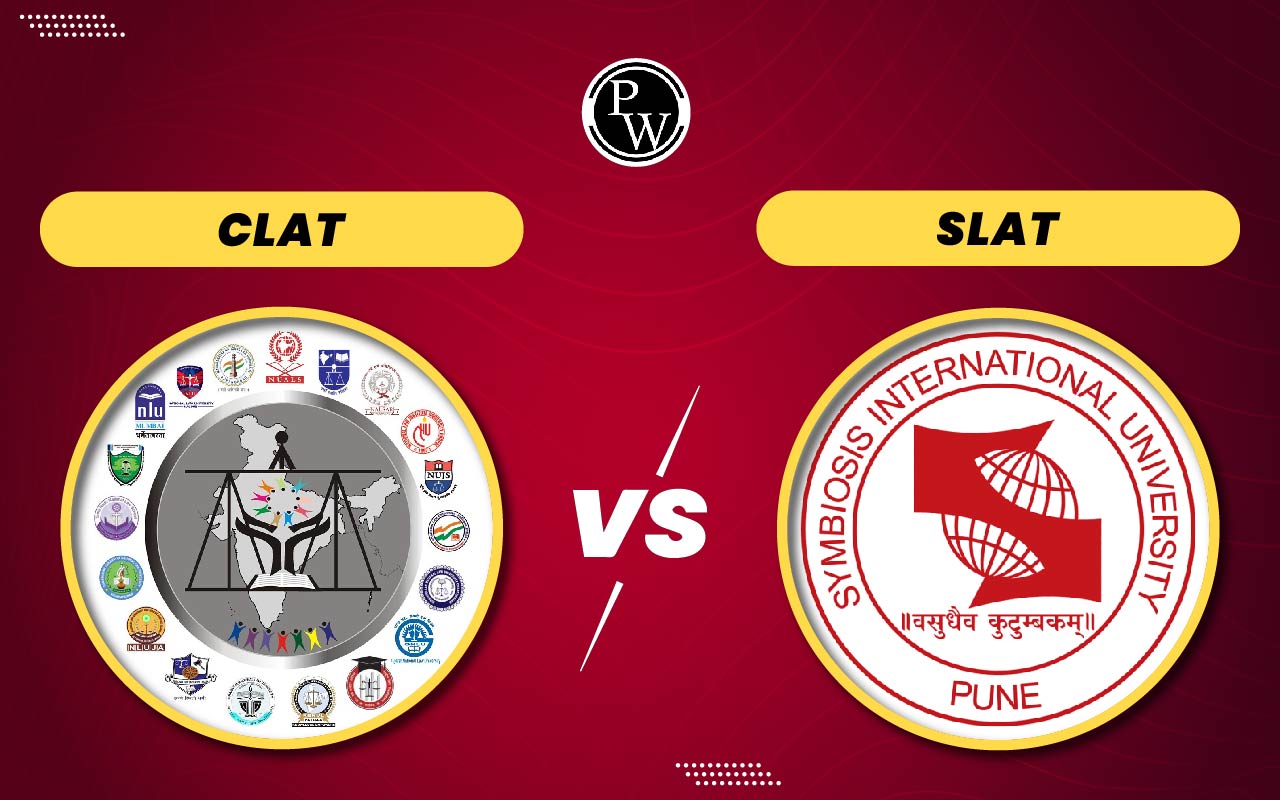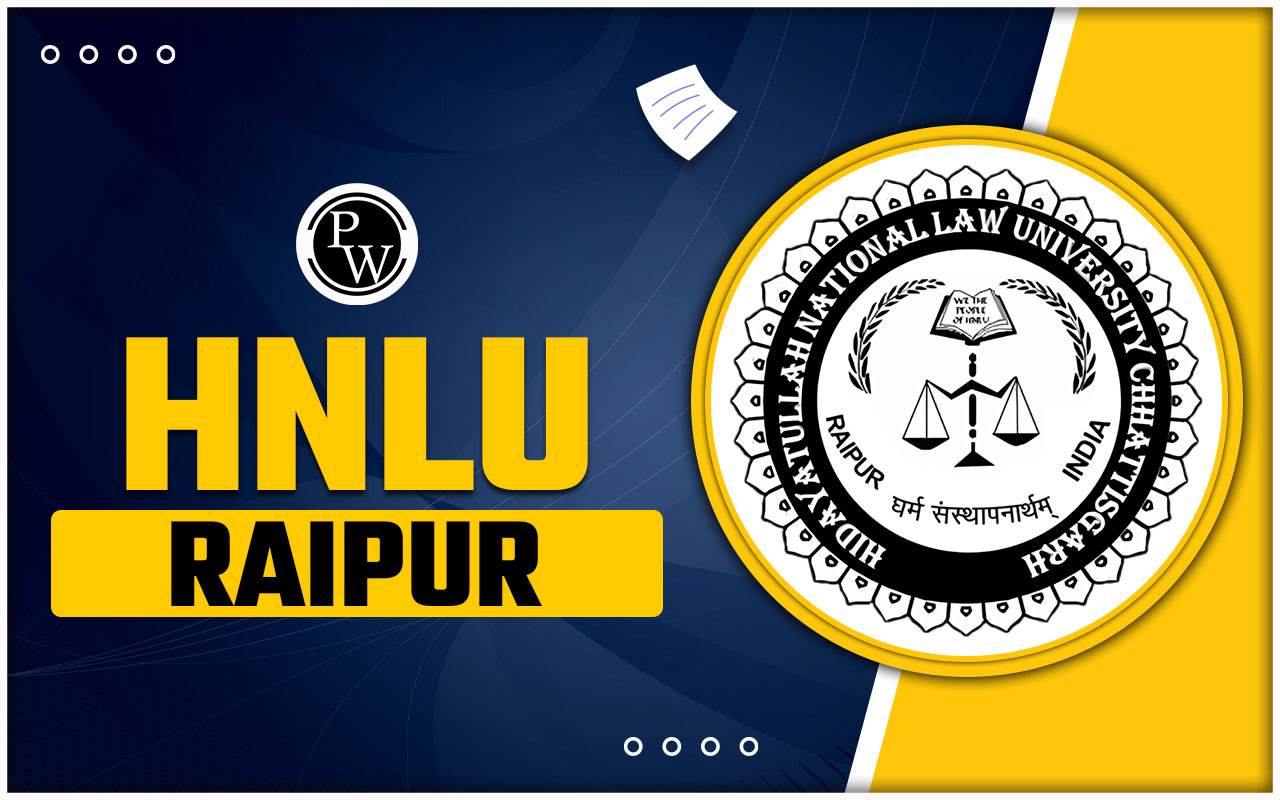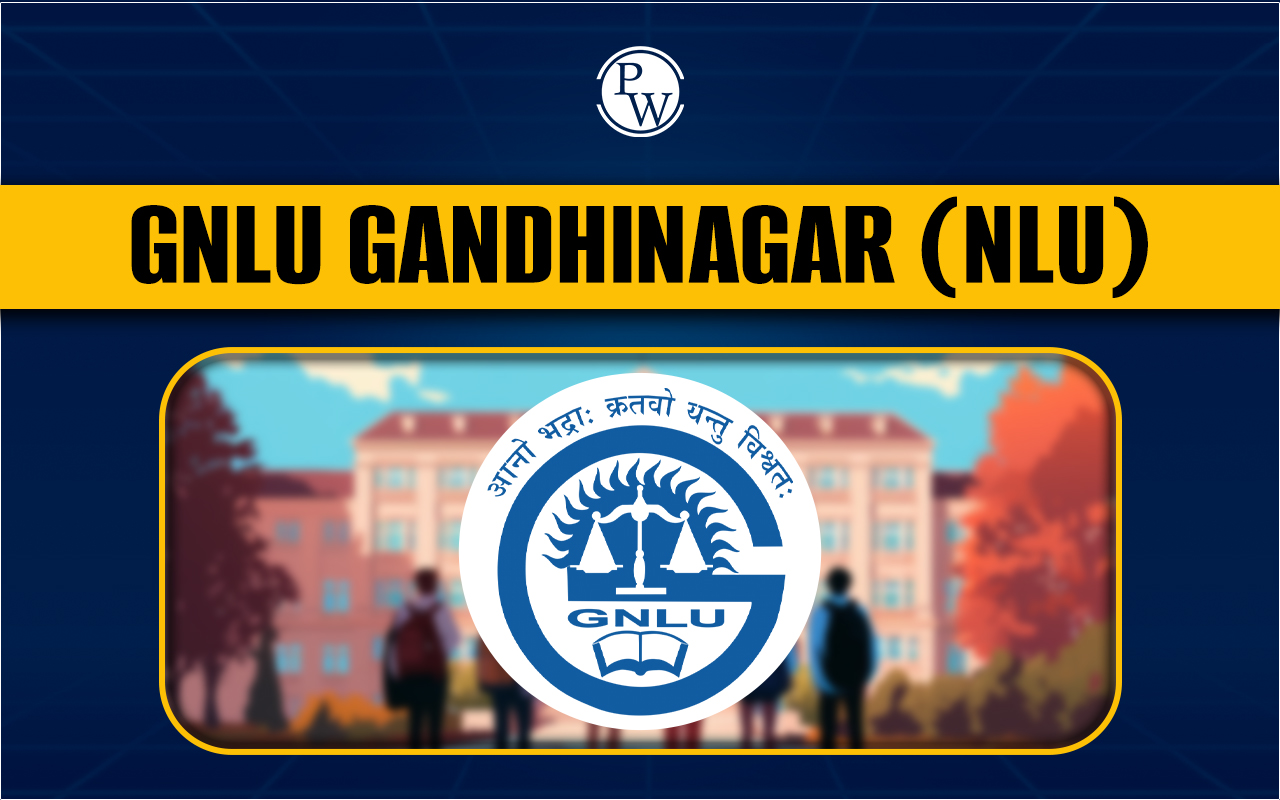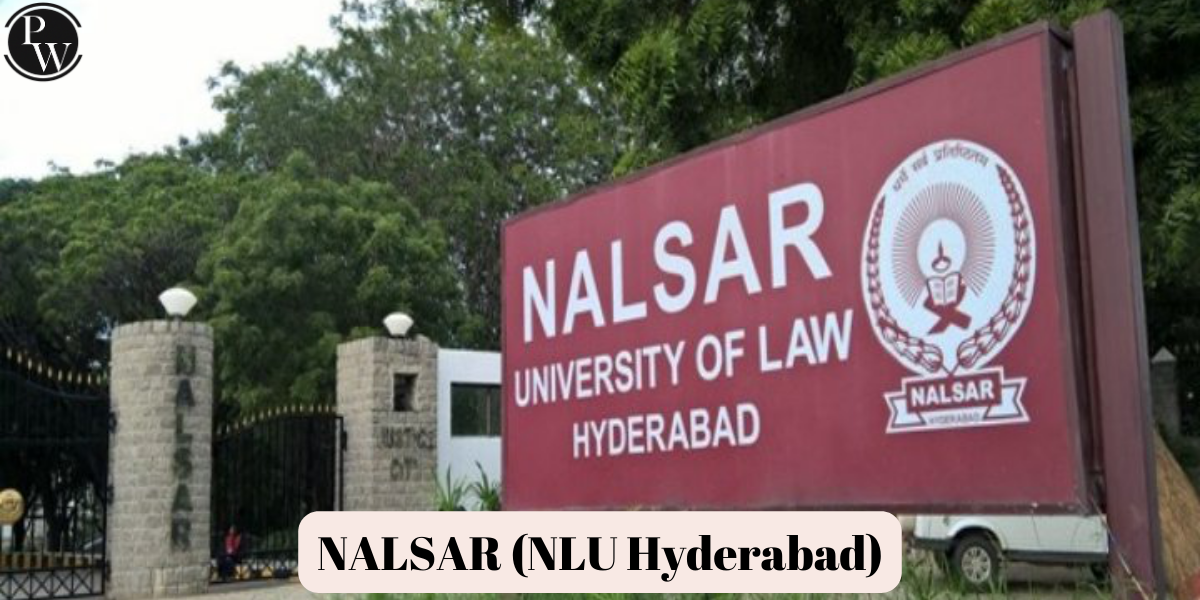

CLAT Vs SLAT: The Common Law Admission Test (CLAT) and the Symbiosis Law Admission Test (SLAT) are two prominent entrance examinations in India for undergraduate law programs. However, each exam serves as a gateway to admissions to the most esteemed law institutions in the country. While both aim to assess candidates' aptitude for legal studies, they differ in various aspects such as eligibility criteria, syllabus, difficulty level, and selection process, before deciding CLAT vs SLAT.
In this article, you can understand the differences between CLAT and SLAT. It is crucial for aspirants seeking admission to top-tier law colleges to have a comprehensive comparison in making informed decisions.What Are The Key Differences Between CLAT And SLAT?
Candidates who want to develop their career in the field of law must know what CLAT and SLAT are. CLAT is a Common Law Admission Test. It is a centralized national-level entrance test conducted by the Consortium of National Law Universities. Through this, candidates can get admission into 5-year integrated LLB (UG) and one-year LLM (PG) courses in 25 out of 27 National Law Universities. Whereas SLAT (Symbiosis Law Admission Test ) is conducted by Symbiosis International University. It is an entrance examination for law students seeking admission to undergraduate law programs offered by Symbiosis International University, Pune.Eligibility Criteria Of CLAT And SLAT
While CLAT assesses candidates for admission to 25 National Law Universities (NLUs), SLAT primarily caters to Symbiosis Law School and other affiliated colleges under Symbiosis International University. To understand the CLAT vs SLAT difference better, candidates can check the eligibility criteria of CLAT And SLAT from here:CLAT Eligibility Criteria
- For candidates seeking admission to UG courses, they must have passed 10+2 with a minimum of 45% marks. ( 40% marks for SC/ST candidates)
- Candidates seeking admission to PG courses must have an LL.B. or equivalent degree in law with a minimum of 50% marks.
SLAT Eligibility Criteria
- Candidates applying for SLAT must have passed two-year Intermediate (10+2) with a minimum of 45% marks. ( 40% marks for SC/ST candidates)
CLAT And SLAT: Exam Pattern
It is important for candidates to understand the CLAT vs SLAT exam pattern to familiarize themselves with the structure of the examination. Below is the complete exam pattern of both the exams:| Exam Pattern | SLAT | CLAT |
| Mode of Exam | Online (Computer-based) | Pen-and-Paper Exam (Offline) |
| Number of Questions | 60 | 150 for UG 120 for PG |
| Question Type | Multiple Choice Questions (MCQ) | Multiple Choice Questions (MCQ) |
| Marks | 1 mark for every correct answer | +1 for every correct answer |
| Negative Marking | None | -0.25 for every incorrect answer |
| Medium | English | English |
| Duration | 60 minutes | 2 hours |
CLAT and SLAT: Syllabus
To understand the difference between CLAT Vs SLAT, candidates need to get familiar with the syllabus of both exams. CLAT primarily focuses on subjects such as English, General Knowledge, Current Affairs, Elementary Mathematics, Legal Aptitude, and Logical Reasoning. At the same time, SLAT also includes Analytical Reasoning and Legal Reasoning in its syllabus. Get the better insights on CLAT and SLAT Syllabus from below:CLAT Syllabus
| Section | No. of Questions | Marks | Weightage |
| English Language | 22-26 | 22-26 | 20% |
| Current Affairs including General Knowledge | 28-32 | 28-32 | 25% |
| Legal Reasoning | 28-32 | 28-32 | 25% |
| Logical Reasoning | 22-26 | 22-26 | 20% |
| Quantitative Techniques | 10-14 | 10-14 | 10% |
| Total | 120 | 120 | 100% |
SLAT Syllabus
| Section | No. of Questions | Marks |
| Logical Reasoning | 12 | 12 |
| Legal Reasoning | 12 | 12 |
| Analytical Reasoning | 12 | 12 |
| Reading Comprehension | 12 | 12 |
| General Knowledge | 12 | 12 |
| Total | 60 | 60 |
CLAT vs SLAT: Which Exam Is More Difficult?
The difficulty levels of CLAT and SLAT vary based on individual strengths and weaknesses. However, the difficulty level has been a key point of the CLAT Vs SLAT debate. As per the previous records, CLAT is often perceived as more challenging due to its intense competition and rigorous examination pattern. CLAT follows a centralized counselling process for admission to NLUs, whereas SLAT involves a separate selection process for each institution under Symbiosis International University. Previous year's question paper analysis can provide insights into it.Previous Year’s Question Paper Analysis: CLAT vs SLAT
Previous Year’s Question Paper Analysis can help you understand the pattern, difficulty level, and types of questions asked in both exams, aiding aspirants in their preparation strategies. This analysis not only helps in understanding the weightage of various topics but also helps in formulating effective preparation strategies tailored to the specific requirements of each exam. Moreover, by identifying question types, aspirants can focus their efforts on areas of weakness and prioritize their study materials accordingly. Ultimately, leveraging the insights gleaned from the previous year’s question paper analysis empowers aspirants to navigate the complexities of these competitive examinations with confidence and precision. Previous Year Question Papers Of CLATCLAT vs SLAT: Selection Process For Admission
Once the results are announced, the conducting body proceeds with the selection process for the qualified candidates. Keep on reading to understand the CLAT vs SLAT selection process for admission.CLAT Selection Process
The selection process for admission through CLAT typically involves multiple stages:- Candidates who have cleared the CLAT Exam get ranks based on their performance.
- After that, NLUs conduct a centralized counselling process as per the CLAT scores for admission to their law programs.
- Candidates are required to register for counselling, indicate their preferences for NLUs, and participate in the counselling rounds.
- During the counselling process, candidates are allotted seats in NLUs based on their CLAT ranks, preferences, and availability of seats in the respective institutions.
- Seat allotment is conducted in multiple rounds until all seats are filled.
- Once seats are allotted. Candidates are required to undergo document verification to confirm their eligibility for admission.
SLAT Selection Process for Admission
The selection process for admission through SLAT involves the following steps:- Once the results are announced, based on the performance in SLAT, candidates are shortlisted for further rounds of selection.
- After that, Symbiosis Law Schools conducts the Personal Interaction (PI) and Writing Ability Test (WAT) for shortlisted candidates. These rounds assess candidates' communication skills, subject knowledge, and writing abilities.
- After the PI and WAT rounds, Symbiosis Law Schools published a final merit list based on candidates' performance in SLAT, PI, and WAT.
- On a merit basis, Symbiosis Law Schools conduct a centralized counselling process for seat allotment.
- Once the seats are allotted, candidates are invited for document verification to confirm their eligibility for admission.
Participating Institutes In CLAT and SLAT
CLAT facilitates admission to prestigious NLUs across India. On the other hand, SLAT primarily caters to Symbiosis Law School, Pune, and other affiliated institutions. Understanding the participating institutes and Seat matrix of CLAT and SLAT is crucial for aspirants to prioritize their preferences during the counselling process.Participating Institutes In CLAT UG
| Courses | NLUs |
| Bachelor of Arts Bachelor of Law (BA LLB) Hons. | NUJS West Bengal, HNLU Raipur, RGNUL Panjab, CNLU Patna, NLU Delhi, NLSIU Bangalore, NLU Hyderabad, NUALS Kochi, NLU Odisha, DSNLU Visakhapatnam, TNNLU Tiruchirapalli, Dr B R Ambedkar NLU Sonepat, NLIU Bhopal, MNLU Mumbai, MNLU Nagpur, MNLU Aurangabad, HPNLU Shimla, DNLU Jabalpur, NUSRL Ranchi, NLUJAA Assam, NLU Tripura, NLU Jodhpur, GNLU Silvassa, NUALS Kochi, GNLU Gandhinagar, RMNLU Lucknow |
| Bachelor of Business Administration (BBA) LLB Hons. | NLU Jodhpur, GNLU Gandhinagar, CNLU Patna, NLU Aurangabad, NLU Nagpur, NLU Odisha, HPNLU Shimla |
| Bachelor of Science (BSc) LLB | NUJS West Bengal, GNLU Gandhinagar, NLU Bhopal |
| Bachelor of Commerce (BCom) LLB | GNLU Gandhinagar, TNNLU Tiruchirapalli |
| Bachelor of Social Work (BSW) LLB | GNLU Gandhinagar |
| Master of Law (LLM) | RMNLU Lucknow, GNLU Gandhinagar, HNLU Raipur, NLSIU Bangalore, RGNUL Panjab, CNLU Patna, NUALS Kochi, NLU Jodhpur, NUJS West Bengal, NLIU Bhopal, TNNLU Tiruchirapalli, MNLU Mumbai, MNLU Nagpur, MNLU Aurangabad, NLU Odisha, NUSRL Ranchi, NLUJA Assam, DSNLU Visakhapatnam, HPNLU Shimla, DBRANLU, Sonepat |
| Doctor of Law (LLD)/ PhD in Law | HNLU Raipur, NLIU Bhopal, NLSIU Bangalore, GNLU Gandhinagar, NLUJA Assam, TNNLU Tiruchirapalli, RGNUL Panjab, CNLU Patna, HPNLU Shimla, NUALS Kochi, MNLU Mumbai |
| Three-year LLB course | National Law University Odisha (Introducing in 2023) NLSIU Bangalore (Introduced in 2022) |
| Master of Philosophy (MPhil) degree | NLSIU Bangalore, NLU Odisha |
Participating Institutes In SLAT
| Course | College |
| BA. LL.B Honours BBA. LL.B Honours | Symbiosis Law School- SLS, Pune |
| BA. LL.B BBA. LL.B | Symbiosis Law School, Noida |
| BA. LL.B BBA. LL.B | Symbiosis Law School, Hyderabad |
| BA. LL.B BBA. LL.B | Symbiosis Law School, Nagpur |
CLAT Vs SLAT: Exam Schedule
CLAT and SLAT are both conducted once a year by their respective conducting bodies. Aspirants should stay updated with the official notification and exam schedules to ensure timely registration and preparation. The official websites to check the CLAT Vs SLAT exam schedule are https://consortiumofnlus.ac.in/ and https://www.set-test.org/slat-overview.html respectively.CLAT Vs SLAT FAQs
Who conducts CLAT and SLAT?
CLAT is conducted by the Consortium of National Law Universities, whereas SLAT is conducted by Symbiosis International University.
Is CLAT conducted twice a year?
No, CLAT is conducted once in a year.
Which one is easier: CLAT Vs SLAT?
CLAT is considered more difficult due to its vast syllabus and rigorous exam pattern.
In CLAT Vs SLAT, which exam should I apply for?
If you want to get into any Symbiosis Law Schools, you can apply for SLAT. But if you want to get into a top LAW college or NLU, you should apply for CLAT.
Is the admission fee for both exams the same?
The application fee for CLAT is ₹4,000/- (₹3,500/- for SC, ST and BPL candidates) whereas the application fee for SLAT is ₹2,250/-.
🔥 Trending Blogs
Talk to a counsellorHave doubts? Our support team will be happy to assist you!

Free Learning Resources
PW Books
Notes (Class 10-12)
PW Study Materials
Notes (Class 6-9)
Ncert Solutions
Govt Exams
Class 6th to 12th Online Courses
Govt Job Exams Courses
UPSC Coaching
Defence Exam Coaching
Gate Exam Coaching
Other Exams
Know about Physics Wallah
Physics Wallah is an Indian edtech platform that provides accessible & comprehensive learning experiences to students from Class 6th to postgraduate level. We also provide extensive NCERT solutions, sample paper, NEET, JEE Mains, BITSAT previous year papers & more such resources to students. Physics Wallah also caters to over 3.5 million registered students and over 78 lakh+ Youtube subscribers with 4.8 rating on its app.
We Stand Out because
We provide students with intensive courses with India’s qualified & experienced faculties & mentors. PW strives to make the learning experience comprehensive and accessible for students of all sections of society. We believe in empowering every single student who couldn't dream of a good career in engineering and medical field earlier.
Our Key Focus Areas
Physics Wallah's main focus is to make the learning experience as economical as possible for all students. With our affordable courses like Lakshya, Udaan and Arjuna and many others, we have been able to provide a platform for lakhs of aspirants. From providing Chemistry, Maths, Physics formula to giving e-books of eminent authors like RD Sharma, RS Aggarwal and Lakhmir Singh, PW focuses on every single student's need for preparation.
What Makes Us Different
Physics Wallah strives to develop a comprehensive pedagogical structure for students, where they get a state-of-the-art learning experience with study material and resources. Apart from catering students preparing for JEE Mains and NEET, PW also provides study material for each state board like Uttar Pradesh, Bihar, and others
Copyright © 2025 Physicswallah Limited All rights reserved.











